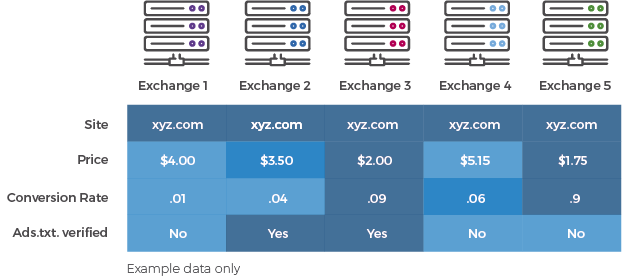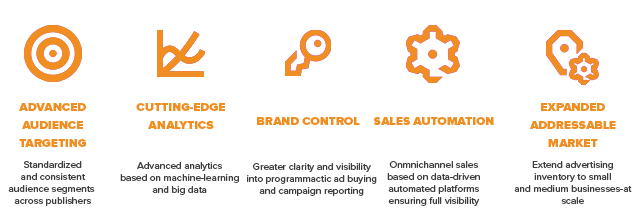How can a higher education institution achieve extraordinary results in an increasingly competitive environment? How should your institution optimize digital campaigns that deliver better results for both lead generation and enrollment efforts?
The Challenges of High-Volume Lead Generation in Higher Education
 By Jorge A. Ayala Rascón
By Jorge A. Ayala Rascón
June 4, 2020

Subscribe to our newsletter
How can a higher education institution achieve extraordinary results in an increasingly competitive environment? How should your institution optimize digital campaigns that deliver better results for both lead generation and enrollment efforts?
To answer these questions, we need to have a complete overview of the digital demand generation possibilities for higher education institutions that need to keep up with the structural changes brought on by the COVID-19 crisis.
INTERESTED IN GETTING PERSONALIZED ADVICE ON RAMPING ON YOUR DEMAND GENERATION? CLICK HERE TO BOOK YOUR FREE 30-MINUTE STRATEGY SESSION.
Paid search, display, programmatic campaigns, as well as affiliate programs, are the most common tools marketers use for higher education demand generation. But over-reliance on these channels often causes the Student Acquisition Costs (SAC$) to increase, reducing profit.
Challenge 1: Obtaining results is getting more expensive
The budget invested in digital advertising is constantly increasing, in higher education and elsewhere, causing demand to skyrocket. With more and more businesses pursuing an impression, CPMs have increased by up to 5x.
Why are the costs of digital advertising continually rising?
- Search habits are changing and occur in micro-moments.
- The increase in competition and the limited available offer has increased the cost per bid.
- The DMPs and DSPs have consolidated, reducing the number of players in the market.
The COVID-19 crisis has only exacerbated these tendencies, making it even harder for higher education marketing professionals to achieve their lead generation and enrollment goals. A 15% reduction in enrollment is expected for the fall 2020 semester.
Although digital advertising remains profitable for most universities and colleges that use lead generation tactics, the above adds pressure for marketing and enrollment executives to increase the sophistication of their strategies. Demand generation strategies, such as lead generation, content marketing, brand interaction need to work together to reduce the student acquisition costs (SAC$), otherwise, they are leaving profitability on the table.
Challenge 2: Demand generation strategy has become more sophisticated
More and more companies are competing for impressions and top-of-mind, not only from other higher education institutions but from every kind of business. This forces higher education institutions to increase the sophistication of their demand generation strategy to increase profitability.
Colleges and universities must find specific niches where their programs can be hyper-relevant. To achieve this level of sophistication marketing teams must implement the right technology. Marketers by themselves are no longer enough; machine learning is needed.
Programmatic advertising (among other tools) offer more advanced algorithms to determine a fair price for impressions or conversions through programmatic advertising. These algorithms are designed to evaluate each specific scenario to match it with the correct bid strategy to deliver the best possible results. After qualifying the variables of each campaign, in a matter of milliseconds, they distribute the bid amount according to the context in which each ad appears.

Using programmatic advertising tools and the correct algorithms allow higher education institutions to increase their digital advertising budget while reaching highly specific niches and segmenting their audiences effectively, in a way that wouldn't be feasible to humans alone.
By merging human insight with the use of programmatic platforms we can take advantage of all digital possibilities to keep your institution competitive. In Julius we help our clients execute these processes without increasing costs that drain profitability.
Challenge 3: The competition is global
Digital advertisement has been disrupted multiple times by the emergence of new channels and the increasing speed of technology. And now it's being disrupted again by the health crisis we are all facing together. Higher education institutions are forced to reconsider their strategies in marketing and also how they interact with students during and after the quarantine.
With the ferocity of the competition, the organizations that have transformed their business models are better equipped to generate more engagement and achieve better results by buying digital media efficiently and effectively.

Source: Accenture
As a consequence of the use of new technologies, institutions find themselves under constant pressure to compete globally. The digital universe has become much more expansive, and the only way to maintain relevance is through hyper-segmentation or by finding specific niches where we can provide value.
The ability to compete and grow requires an efficient operations model that delivers a complete experience for the user. Higher education institutions must use their strengths in an innovative way to maintain relevance during the digital era.
How can we help?
To further understand how can these principles apply to your institution schedule a call with our Managing Director for North America.
Make sure to book a slot on his calendar here.
Recommended for you
The Julius’s Do’s and Don’ts to Nearshore Your Digital Marketing Team
13 de October, 2023
Fueling Your Digital Marketing Organization's Growth Through Top Staffing Services
04 de September, 2023
Let's get Connected.
We are passionate about turning everything we put our minds to into a reality.

.png) Twitter
Twitter.png) Facebook
Facebook.png) LinkedIn
LinkedIn Instagram
Instagram




